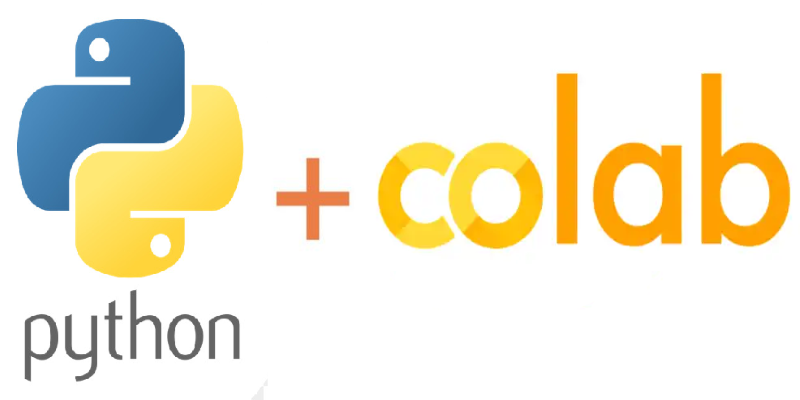Advertisement
Running Python online is one of the easiest ways to get started, whether you're trying out a short script, debugging a function, or working on a project from a mobile device. These platforms don't require installation or configuration. All you need is a browser. Below are 10 solid options where you can write and run Python code, each offering something slightly different.

Google Colab combines the notebook format of Jupyter with the convenience of Google Drive. You write code in cells, and the output appears right beneath. This format is especially helpful for projects involving data analysis, machine learning, or anything that involves charts and graphs. It supports powerful libraries like pandas, matplotlib, TensorFlow, and more.
What makes Colab stand out is its built-in access to GPUs and TPUs at no cost. You can save your files directly in Drive, share them with others, or publish them as public notebooks. The environment resets if idle for too long, but for live work or collaborative sessions, it's one of the most accessible tools out there.
Replit functions like a cloud-based code editor that runs Python and many other languages. It has a multi-file editor, terminal access, and live output. One of its best features is real-time collaboration—you and someone else can work on the same project at once, like editing a shared document.
It works well for both casual scripting and structured app development. With built-in package management and support for web projects, it’s great for users who want more than just a basic compiler. You can also set up projects that respond to user input or run continuously.
Trinket is ideal when you're working with classroom content, short demonstrations, or visual learning tools. It supports libraries like turtle, which are often used to teach programming logic visually. You can embed the output and the code itself on websites or blogs, making it useful for instructors and content creators.
Instead of aiming for a full development experience, Trinket is built to support short, interactive snippets that work well in education settings. The platform’s layout favors clarity and keeps the learning environment free of distractions.
Binder is built to share complete Python notebooks without setting up a local environment. It links to GitHub repositories and spins up a temporary live environment where the code is executable. Your visitors can interact with notebooks, run cells, and test examples live.
This tool isn't for long-term projects—sessions expire after inactivity—but it's one of the few ways to let others run your complete code with full control in-browser. It's a great fit for researchers, educators, and open-source contributors who already use notebooks regularly.
PythonAnywhere offers a browser-based code console and supports running Python scripts and hosting small web applications. It’s structured around having a persistent workspace, so your files and data remain between sessions. You can write, test, and even deploy code within the same platform.
It's especially useful when you're developing backend services or need to automate tasks. Built-in support for scheduled scripts, email triggers, and file management makes it more of a working tool than a testing toy.
OnlineGDB includes features you’d expect in a traditional desktop IDE, like breakpoints, debugging, and file trees. The focus here is on helping you test not just whether code runs, but how it behaves step-by-step.
It’s useful for learners trying to get used to error handling, logic flow, and code tracing. The debugger works directly in the browser and lets you track variable states, which can be especially useful when you're dealing with recursive functions or layered conditions.

JDoodle lets you paste in code and run it instantly, with support for many languages beyond Python. It’s especially popular among users who want a place to quickly test an idea or see how a snippet behaves. There's also a small input box if your code requires standard input.
You can share what you wrote via a simple link. It doesn’t try to offer advanced IDE functions, but for isolated tasks, algorithm tests, or learning syntax differences, it’s fast and reliable. It also includes an API for programmatic execution, useful in learning apps or quizzes.
The Programiz compiler is designed with a focus on learning clarity. It’s often used by beginners, not just because of how clean the layout is, but because of how well it pairs with the rest of the Programiz platform, which includes tutorials and example-driven content.
It limits distractions and keeps the focus on writing and seeing the result. While it’s not built for multi-file apps or production-grade code, it's perfect when you’re following a guide, testing function outputs, or brushing up on the basics.
Known for frontend development, CodeSandbox also supports Python projects through backend templates. It creates a full project workspace in the browser with a file explorer, environment configuration, and live console output. Unlike single-script tools, it lets you simulate real-world folder structures and dependencies.
It shines when you're working on modular code or trying to simulate a small app architecture. You can even connect the frontend and backend codes in the same workspace. While the Python support isn't as mainstream as its JavaScript features, it offers an organized coding environment for structured work.
Though Glitch focuses on quick web apps, it supports Python through its backend templates. You can build and test API endpoints, automation scripts, or server-based apps directly in the browser. The auto-refresh on save and live preview tools make it easy to see updates without restarting your code.
What makes Glitch different is how it balances a visual layout with real backend logic. It’s not just for learning—it’s for quick deployment, mock-ups, or interactive experiments that run on real servers.
There’s no shortage of places to run Python online, and each one on this list brings something different to the table—whether it's live collaboration, project management, educational features, or speed. You don’t need to install a thing, and in many cases, you can go from idea to working code in under a minute. It all comes down to how much control you need and what kind of task you’re working on.
Advertisement

Discover the top 5 benefits of RingCentral's RingCX, the AI-powered CCaaS platform redefining cloud-based customer service.

Alluxio debuts a new orchestration layer designed to speed up data access and workflows for AI and ML workloads.

How to translate your audio using Rask AI to create multilingual voiceovers and subtitles with ease. Discover how this AI tool helps globalize your content fast

Explore the core technology behind ChatGPT and similar LLMs, including training methods and how they generate text.

Explore 6 practical techniques for displaying lists in Python using tools like the print function, for loop, and f-string formatting. This guide helps you show list data cleanly and clearly for real-world use

Find out the 8 top-rated AI tools for social media growth that can help you boost engagement, save time, and simplify content creation. Learn how these AI-powered social media tools can transform your strategy

How to handle NZEC (Non-Zero Exit Code) errors in Python with be-ginner-friendly steps and clear examples. Solve common runtime issues with ease

Looking for a reliable AI essay writer in 2025? Explore the top 10 tools that help generate, structure, and polish essays—perfect for students and professionals

Explore how artificial intelligence improves safety, health, and compliance in manufacturing through smarter EHS systems.

How Oppo’s Air Glass 3 XR brings AI-powered VR glasses to everyday life with smart features, sleek design, and seamless usability in real-world settings

In this article, we talk about the types of neural networks. CNN vs RNN vs ANN, and how are they all different.

Learn how to build Custom GPTs using this step-by-step guide—perfect for developers, businesses, and AI enthusiasts alike.